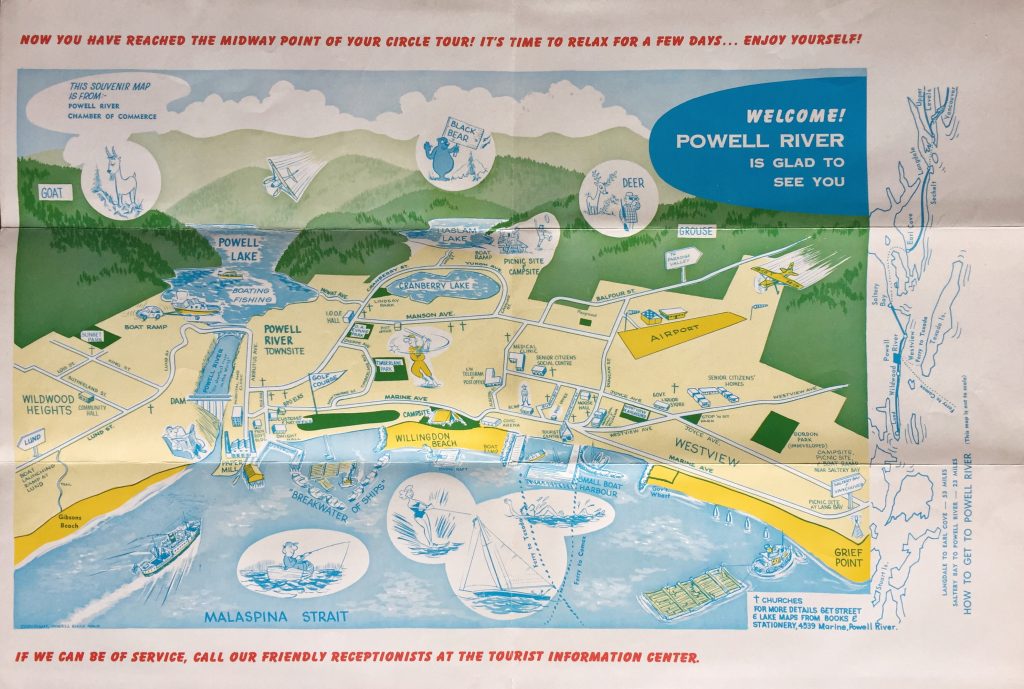If you started a new tourism destination from scratch, would you invest your limited resources in a brick-and-mortar visitor centre?
It’s common practice to operate one; according to one study, eight out of ten destination marketing organizations (DMOs) have an official info centre. These visitor centres can evoke civic pride when locals provide top-notch hospitality and valuable services to travellers. This makes some people reluctant to change. Why break a trusted model? Every destination needs its visitors to have positive experiences, and a well-managed visitor centre is one way to make that happen.
But the assumption that every destination needs a physical, permanent visitor centre is a destination marketing idea that needs to die.
Just because you built it, doesn’t mean your visitors still need it.
To effectively match visitor services with visitor needs, destinations need a process to align destination strategy with visitor behaviour and the customer journey.
Visitor behaviour has fundamentally changed.
As visitors use mobile technology to access information, some destination marketing organizations (DMOs) are rethinking the way they provide visitor servicing. In 2017, VisitScotland announced the closure of 39 of its 56 visitor centres after measuring a ten-year “decline in the number of tourists visiting their information centres, amounting to a 58% drop in footfall.” But Scotland has been outpacing the rest of the U.K. in visitor growth for six straight years. Where are today’s visitors getting the services they need?
Not so long ago, visitor centres provided information, maps and travel advice that were in short supply elsewhere, filling a vital need for trip planning after arrival.

This mid-1970s tourist map and brochure of Powell River, Canada (“Central Point of B.C.’s Coast Circle Tour”) encourages travellers to find help at the tourist information centre.
Today, smartphones are filling the information gap more thoroughly and conveniently than visitor centres can. The mobile internet has dramatically changed the way visitors plan their trips, and today, many visitors are finding that support online, anywhere they go.
Visitors servicing needs will vary from one destination to the next, says Destination Think’s Chief Strategist William Bakker, but there is an overarching trend at work. He sums it up this way:
“In the past, people proactively sought out the visitor centre. Now, if visitors happen to find one, they will probably wander in – why not? But they no longer see it as a must-do as soon as they arrive. That’s a fundamental change.”
Destination Think has been working on a number of projects around the world to help destinations review and reimagine their visitor servicing to align with their destination strategy and respond to the needs within the customer journey. Our process reveals perceptions and expectations of the local tourism industry and modern travellers, within the context of today’s visitor servicing trends.
Our Chief Strategist urges DMOs to address the fundamental issues by understanding how visitor servicing supports both business objectives (“What value does our visitor centre provide?”) and visitor needs (“If we didn’t have a visitor centre, would we serve our visitors less effectively?”).
Here’s a real-life example from Tourism Western Australia (TWA), which used our process to guide its decisions with the best available research and context.
Western Australia responds to changing consumer behaviour by changing its visitor centre.
TWA is making changes to the Western Australian Visitor Centre (WAVC) in Perth to address “a drop in visitor numbers due largely to more people accessing destination information via their mobile phones and other devices,” and following a strategic assessment completed by Destination Think. (Read the TWA press release here for more info.)
To provide concrete recommendations, Destination Think’s team begins by researching and analyzing visitor behaviour, local perceptions and current visitor centre performance. We then review the research in the context of international trends that shape the way DMOs provide effective visitor servicing.
Within this context, we then apply the following four criteria to provide the strongest possible options for improving visitor services.
4 criteria for visitor servicing that address its role within your destination
1) DMO objectives
What is your organization trying to achieve?
Today, visitor servicing often means enhancing the visitor experience in the destination. Better experiences lead to better word of mouth, which leads to better success for your tourism industry.
2) Place DNA® and context
How does your destination’s visitor servicing reflect the destination’s identity?
Articulating your Place DNA® will help your staff understand the value visitors will get from their experience, and connect your visitor centre with the authentic destination story. And by learning how your destination is perceived, you will be able to better address your consumers’ needs and concerns.
3) Visitor needs in the customer journey
Which problems are you solving for the visitor?
Destination Think uses a design thinking methodology to help destinations better understand their visitors’ motivations, wants and needs. Our DMO clients then create personas and map the visitor decision-making process, along with the physical routes travellers take. By understanding the customer journey, DMOs can identify opportunities to provide a better experience.
4) Human touch
At which points in the customer journey do your visitors need direct assistance from a human being?
The advent of smartphones hasn’t removed the need for face-to-face hospitality. A study of the current customer journey often reveals opportunities to improve service delivery.
The destinations that succeed with visitor servicing today have left old assumptions behind and are meeting their visitors where their current needs are greatest.
Destination Think’s international expertise and collaborative processes help organizations like Tourism Western Australia match visitor servicing to modern visitor needs. Contact us to find the right strategy for your destination.
Featured image: Friendly visitor servicing at String Lake in Grand Teton National Park, Wyoming. Source: Grand Teton, Flickr









0 Comments